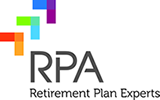There are many benefits to be derived from maintaining a defined contribution retirement plan including:
-
- Retirement income for owners and employees
- Tax deductible employer contributions
- Tax deferred contributions to to employees’ accounts
- Tax deferred investment earnings
- Increased employee morale
- Reduced Turnover
- Attracts valuable new employees
What are Defined Contribution Retirement Plans?
A defined contribution plan defines the contribution the company will make to the plan. Contributions are usually based on a percentage of eligible employees’ compensation. The minimum and maximum employer contributions vary by type of plan.
Separate account balances are maintained for each eligible employee. The employee’s account grows through employer contributions, investment earnings and in some cases forfeitures (amounts from the non-vested accounts of terminated participants that may be reallocated to the remaining participants). Some plans may also permit employees to make contributions on a before-and/or after-tax basis.
The participant’s retirement, death or disability benefit is based upon the amount in his account at the time the distribution is payable.
The maximum annual addition to an employee’s account ( taking into consideration all defined contribution plans sponsored by the employer) is subject to limitations. Compensation that may be considered for plan purposes is also capped. These maximums are adjusted for cost of living increases annually. (See “Annual Limits” for current limits.)

